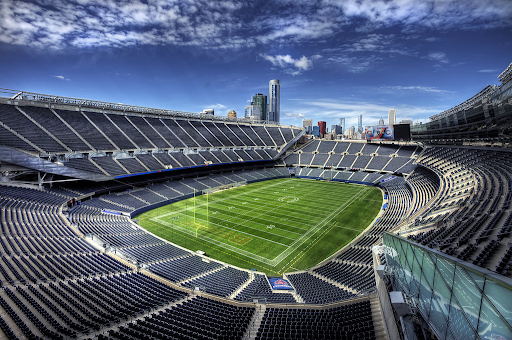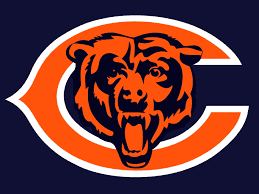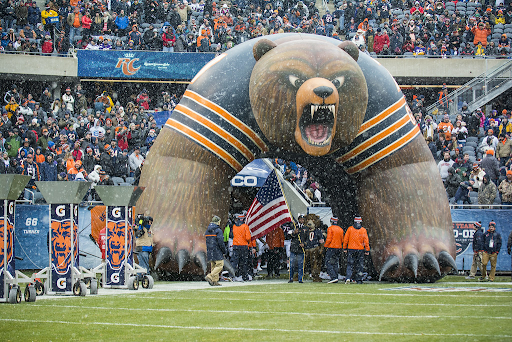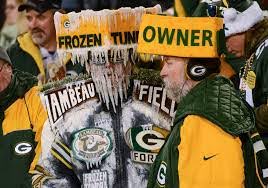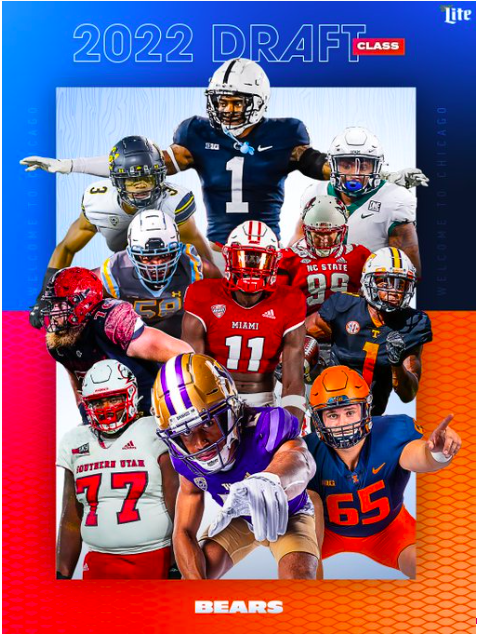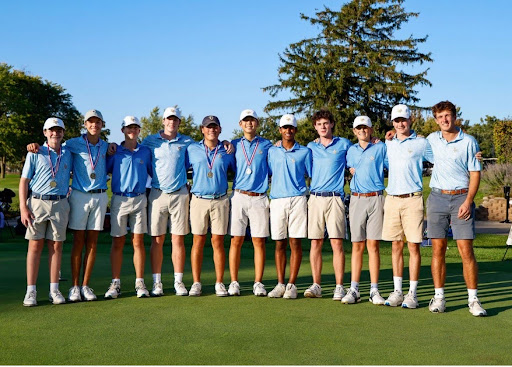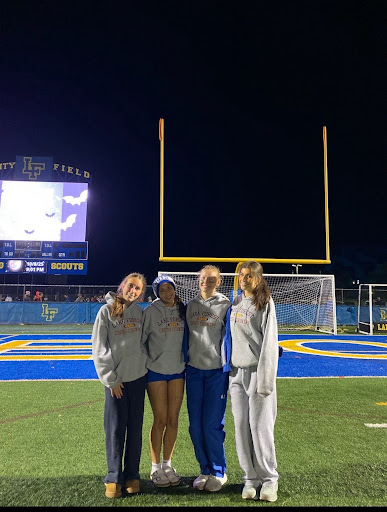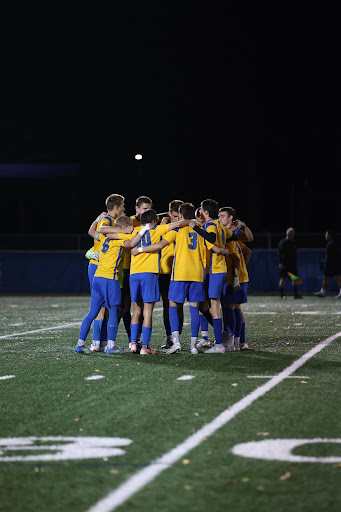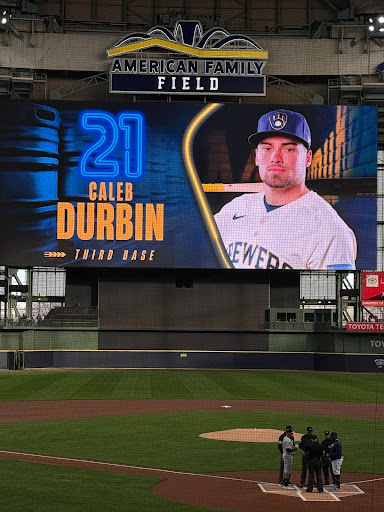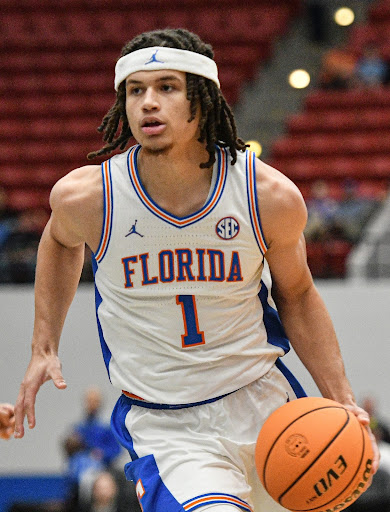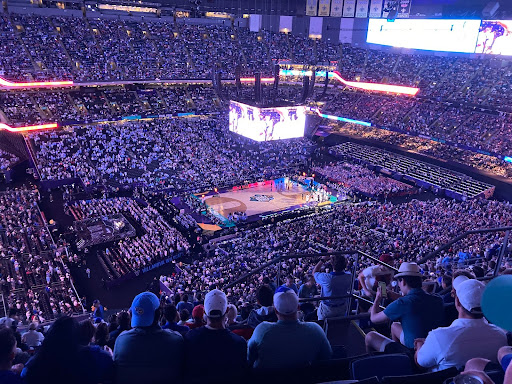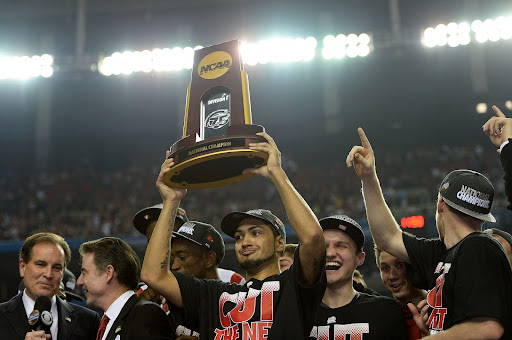There’s no doubt that the Chicago Bears had an underwhelming 2024 season. With rookie quarterback Caleb Williams at the helm, expectations before the season were through the roof. Fans felt hopeful following a 4-2 start to the year, only for the team to go on a 10-game losing streak after the bye week and finish with a 5-12 record.
Believe it or not, there’s still a sense of hope brewing among the fans.
Bears Hire Ben Johnson As New Head Coach
The first step in turning any franchise around is hiring the right Head Coach to lead the team. It’s safe to say fans are excited about the hire, and it makes sense. Coaching the Lions’ offense into one of the best units in the league, Ben Johnson first became a hot candidate over two years ago. But after surprisingly deciding to return to the Lions after a tough playoff loss, all eyes were on him to see if he could repeat his success as an Offensive Coordinator. Johnson responded by helping lead the Lions to a 15-2 record, powered by the highest scoring offense in the league.
Scheme and Personnel: What to Expect in Terms of Roster Construction
It’s hard to tell exactly how Johnson wants to construct his offense this early, but he’s mentioned some key components of his philosophy that can indicate what to expect. A few things are abundantly clear: He will completely rebuild his offense around the skill set of Caleb Williams, and fortifying the offensive line is a top priority this off-season.
He said as much in his introductory press conference.
“We’re going to build this thing. This is not simply a dropping of a previous playbook down on the table and starting there. Nope, we’re ripping this thing down to the studs, and we’re going to build it out with [Williams] first and foremost,”
In Detroit, his offense featured a strong run game, powered by the backfield duo of Jahmyr Gibbs and former Bear David Montgomery, nicknamed “Sonic and Knuckles.” The Bears currently have D’Andre Swift and Rochson Johnson as the top two RBs on the depth chart, but 7th round rookie Kyle Monangai out of Rutgers could be a diamond in the rough due to his grit and physicality as a runner and blocker, despite his smaller stature.
A major reason why the Lions were the 6th best running team in the league was the very strong offensive line play, especially from right tackle Penei Sewell.
Last season, Sewell boasted a 90.5 run blocking grade perPro Football Focus (PFF), which was the second best in the entire NFL among tackles. Bears’ Darnell Wright is expected to play a similar role to Sewell in Johnson’s offense. Wright’s measurements are nearly identical to Sewell, with both being listed at 6’5, 335 lbs. Wright is a very capable run blocker in his own right (no pun intended), with a PFF run block grade of 82.2, 7th among OTs. The Bears need him to develop if they want to incorporate concepts that worked for the Lions offense.
While Sewell was the cornerstone of the Lions’ O-line, all five spots needed to excel in order for the team to be successful. The Lions proved that teams need to spend money and use high draft picks to get talented players. Four of the five offensive linemen were former first round picks. As a unit, the Lions had the 7th most expensive O-line group; spending nearly 20% of their total cap space on offensive linemen last season. The Bears, by comparison, spent just about 7% of their salary cap room on O-linemen nearly $30M less than Detroit.
You get what you pay for. And what the Bears got last year was a league-leading 68 sacks allowed.
But last year was last year. Johnson, General Manager Ryan Poles, and the rest of the front office have made all the right moves, so far. When the top free agent guard, Trey Smith, got franchise tagged by the Kansas City Chiefs, it seemed as if O-line options had dried up.
Then, the Bears traded a 6th round pick for former Pro Bowl OG Jonah Jackson from the Los Angeles Rams. While Jackson had a down year with the Rams, his best work was in Johnson’s scheme in Detroit. At his best, Jackson is a versatile, starting level guard with upside in both the run and pass game. The concerns with this deal come from issues with Jackson’s shoulder, which limited him to just 4 games last year, and his large contract. His $17.5M average annual value gives him the 10th highest salary in the league for a guard, but he hasn’t shown top-10 level production yet. However, he is still a clear upgrade over last year’s right guards.
The very next day, Poles made a surprise trade for left guard Joe Thuney from the Kansas City Chiefs. Giving up a 4th round pick, the move was a sign that the team was finally taking the trenches seriously. Thuney is a four-time Super Bowl champion, four-time all pro, and allowed zero sacks last year. Although Thuney is 32 and makes $16M annually, he has shown no sign of slowing down and has been nothing short of elite over his nine-year career.
Poles wasn’t done yet, signing top free agent center Drew Dalman for 3 years, $42M. The 26-year-old appeared in just 9 games for the Falcons last year due to an ankle injury, but was excellent in the time he played. Dalman is already an elite run blocker, and has quickly improved as a pass blocker since entering the league in 2021. PFF has graded him as a top three center both of the last two years. Despite his smaller size for a center, Dalman utilizes his athleticism and superior technique to protect the QB and create running lanes for his running backs.
The complete overhaul of the interior offensive line should have a significant impact on the team next year. If the O-line can do their job, the rest of the offense can feel comfortable doing theirs. And a comfortable offense means more points.
An overlooked part of the Lions offense was the run blocking provided by their wide receivers. This is consistent with Johnson’s philosophy, who told ESPN Chicago, “No Block, no rock.”
The Lions’ best receiver, Amon-Ra St. Brown, got a 65.0 run block grade in 2023. Comparably, the Bears’ best receiver, DJ Moore, received a 64.1, so Johnson should have no trouble getting his players to buy into this mentality. The Bears added Olamide Zaccheaus, another receiver with good blocking ability, in free agency.
Receivers aren’t just going to block, though. In addition to D.J. Moore and Rome Odunze, the team snagged Missouri WR Luther Burden III with the 39th pick. The 21-year-old had been projected to go early in the first round before his junior season, but after a statistically weak year with the Tigers led to a fall down draft boards, allowing the Bears to pick him with their second pick. Both he and D.J. Moore is dangerous with the ball in their hands, and every play has a chance to go the distance. Amon-Ra St. Brown thrived out of the slot in Johnson’s offense, so having two or three players that can operate from that position provides versatility in how the offense could look to attack. Rome Odunze, a first-round pick from last year, is expected to build on his solid rookie season. His big frame and reliable hands can be a huge asset for Caleb Williams in their sophomore season together.
Another pass catcher, 10th overall pick Colston Loveland, will join Cole Kmet in the tight end room. Loveland is a fluid athlete that moves more like a wide receiver than a 6’6 tight end. Kmet and Loveland can both get minutes due to their different skill sets. While Kmet is a good blocker with good hands, Loveland can be a deep threat that operates from different positions on the field.
It’s clear that the goal was to get more weapons for Caleb.
Despite this front office’s past failures, the moves made this offseason finally show a clear focus on winning. By spending big money on established players, using draft capital on positions of need, and hiring the top available coach to lead this young offense, the team has instantly become a real threat in the NFC. We have to wait and see how much this offense can continue to improve between now and the start of the new season.

